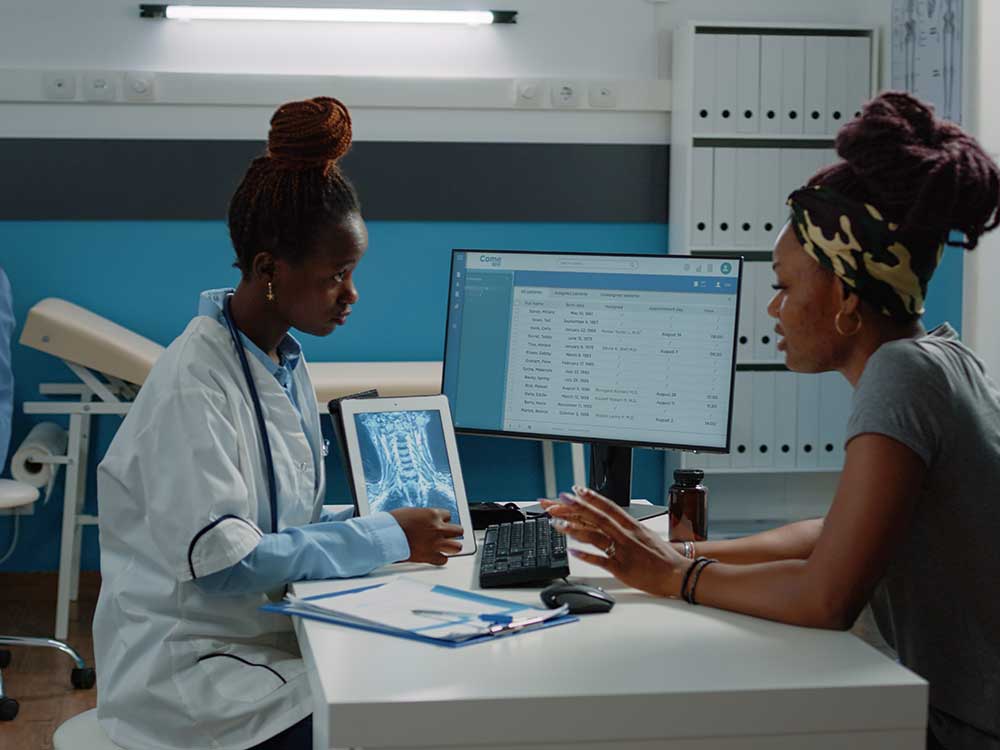Medical Administration Careers: Discovering Work Opportunities and Incomes
Medical Administration Careers: Discovering Work Opportunities and Incomes
Blog Article
Best Practices in Medical Administration for Improving Efficiency and Minimizing Prices
In the ever-evolving landscape of health care, the search of finest techniques in medical administration is extremely important for enhancing efficiency and suppressing expenditures. By incorporating innovative modern technologies such as electronic health and wellness records and telemedicine, medical care companies can improve procedures and boost individual care. Nonetheless, technology alone is not a panacea; optimizing resource allotment and promoting collective communication amongst treatment groups are equally crucial (medical administration). As companies aim to stabilize top quality and expense, what methods should be prioritized to accomplish these double goals? The solution to these inquiries hold the key to a much more sustainable medical care system.
Leveraging Advanced Technology
In today's quickly progressing healthcare landscape, leveraging advanced modern technology is no much longer optional but necessary for efficient medical administration. The assimilation of electronic remedies right into medical care systems has transformed the method facilities operate, simplifying processes and boosting client care. Electronic Wellness Records (EHRs) are crucial, providing comprehensive client data that can be accessed instantly by authorized personnel, thus reducing redundancy and minimizing errors. By centralizing patient information, EHRs remove the demand for difficult documentation and assist in smooth interaction amongst medical care suppliers.
Telemedicine is an additional technical advancement that has actually changed person communication. It provides convenience for both individuals and health care experts by allowing remote consultations, which can lower the requirement for in-person check outs and optimize appointment organizing. Furthermore, telehealth systems can prolong healthcare access to rural or underserved areas, bridging voids in treatment delivery.
In addition, making use of Expert system (AI) and equipment knowing is coming to be progressively prevalent in anticipating analytics, enabling for very early detection of possible health and wellness problems and even more informed decision-making. These technologies, when incorporated effectively, can enhance analysis precision and personalize individual therapy plans, eventually leading to improved medical care outcomes and operational effectiveness.
Optimizing Source Allocation
Effective resource allowance is important for optimizing the efficiency of medical administration. By tactically taking care of sources such as personnel, devices, and funds, healthcare facilities can significantly improve their functional performance, enhance individual end results, and decrease unnecessary expenses. The very first step in enhancing resource appropriation includes carrying out a thorough assessment of existing properties and recognizing locations where sources might be underutilized or exhausted. This evaluation must be data-driven, making use of metrics and analytics to notify decision-making procedures.
Prioritizing source allowance based on client requirements and service needs is essential. This entails straightening resources with high-demand areas, such as emergency treatment or specialized treatments, to ensure prompt and efficient patient treatment. Applying adaptable staffing designs can likewise enhance labor sources by readjusting workers allocation in feedback to varying patient quantities. Additionally, welcoming telemedicine and other technical remedies can minimize physical source restrictions by offering alternative avenues for patient-provider communications.
Economic resources ought to be thoroughly kept track of and allocated with calculated insight to sustain both short-term functional demands and long-term institutional goals. This consists of investing in training programs that enhance personnel expertises and adopting see energy-efficient methods that minimize operational costs (medical administration). Inevitably, an optimized source allotment approach fosters a sustainable healthcare atmosphere that is receptive, effective, and economically prudent
Streamlining Operations Procedures
When healthcare facilities goal to improve operational effectiveness, simplifying operations processes becomes an essential emphasis. Reliable operations minimize redundancy, eliminate unneeded actions, and boost control amongst healthcare experts. This method not just accelerates solution distribution however additionally enhances the high quality of individual treatment.

Following, innovation assimilation plays a substantial duty in improving workflows. Applying electronic health documents (EHRs) and electronic physician order access (CPOE) systems reduces documents, lessens human error, and guarantees details is accessible to all appropriate employees. Additionally, leveraging telemedicine platforms can enhance person examinations and follow-ups, lowering the pressure on physical facilities.

Inevitably, structured operations bring about set find out you back decreases and boosted patient fulfillment, promoting a much more sustainable health care atmosphere.
Enhancing Data Administration
Structure upon structured operations, maximizing information management becomes an important part in progressing medical care management. Effective data administration systems are vital for keeping exact patient records, improving decision-making, and guaranteeing compliance with regulatory criteria. By applying durable data monitoring solutions, healthcare facilities can improve the top quality of person treatment while concurrently reducing operational costs.
One key facet of boosting information management is the assimilation of innovative digital health document (EHR) systems. These systems promote the smooth exchange of individual info across different departments, reducing replication of tests and reducing mistakes. A properly designed EHR system sustains information analytics, enabling doctor to determine patterns and make informed decisions pertaining to individual care.
Moreover, guarding client information is critical. Adopting thorough cybersecurity procedures, including file encryption and normal audits, ensures the stability and confidentiality of delicate information. This not only protects individuals yet also keeps the organization's online reputation.
Buying personnel training is an additional vital variable. Educating health care professionals on data administration methods boosts their capacity to efficiently use innovation, bring about improved patient results. To conclude, enhancing data monitoring with sophisticated technology and you could try this out extensive training is necessary for achieving performance and expense reduction in medical administration.
Fostering Collaborative Communication
An essential element in advancing clinical administration is cultivating collective communication among medical care professionals. Reliable communication is critical for guaranteeing smooth individual treatment, enhancing therapy outcomes, and reducing errors. By motivating open dialogue and coordination across multidisciplinary groups, medical care companies can boost their functional performance and minimize unnecessary prices.
Central to this strategy is the assimilation of communication innovations such as electronic wellness documents (EHRs) and protected messaging platforms, which promote the fast exchange of vital individual information. These devices make it possible for doctor to gain access to and share data in actual time, making sure that all staff member are notified and aligned in their decision-making procedures. Normal team meetings and interdisciplinary rounds can better advertise a culture of partnership and accountability.
Educating programs focused on enhancing interaction abilities are also necessary. Inevitably, fostering collective interaction leads to boosted medical care delivery and expense savings.

Final Thought
Integrating innovative modern technology, such as digital wellness documents and telemedicine, alongside optimized source allotment and streamlined workflow processes, is important for improving performance in medical management. Effective data administration and promoting collective communication among medical care groups are crucial for minimizing redundancies and boosting treatment high quality. By prioritizing preventive care and taking part in top quality enhancement efforts, healthcare companies can attain considerable cost financial savings and boosted individual outcomes, thereby making certain lasting health care delivery in a significantly complicated environment.
Report this page